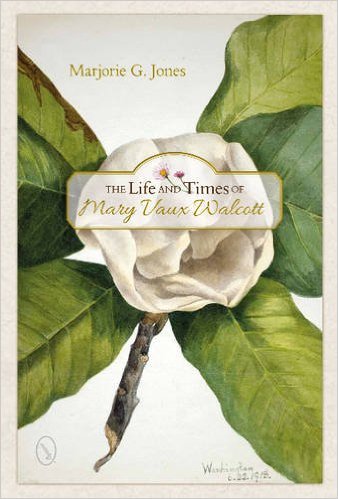With her December 2015 publication, The Life and Times of Mary Vaux Walcott, released through Schiffer Publishing, author Marjorie G. Jones, a 1968 graduate of Rutgers Law-Newark, explores the life of the woman who was known as the “Audubon of Botany.”
Mary Vaux Walcott (1860-1940) was a noted Quaker watercolor artist. Quakers try to avoid decorative arts, yet Vaux was encouraged to depict God’s work in nature from an early age. She began to collect and paint the North American wildflowers, for which she is primarily noted and recognized, and, today, there are almost 1,000 of her prints posted on the Smithsonian website. After she exhibited at Washington, DC’s Corcoran Gallery of Art in the 1920s, she garnered the nickname “Audubon of Botany.”
Walcott spent the first half-century of her life caring for her intimidating father in Philadelphia. At age fifty-four, against her father’s wishes, she married Charles Doolittle Walcott, the widowed fourth secretary of the Smithsonian Institution. This marriage propelled her into the highest circles of Washington society and politics, where she became a close friend of First Lady Lou Henry Hoover, wife of President Herbert Hoover, the nation’s first Quaker president.

“If she hadn’t married the Secretary of the Smithsonian, whether her paintings would be widely known today is debatable,” says Jones.
Her father and two younger brothers inspired Walcotts’s passion for nature. Her father, George Vaux Sr., lived by the Quaker belief that there was immense spiritual value in travel and the study of nature. Vaux herself believed that the wilderness was a sacred place, and her brothers, George Vaux Jr. and William S. Vaux, were mountaineers, photographers, and scientists.
When her brother George died in the 1920s, Vaux was named a commissioner of the Bureau of Indian Affairs and traveled throughout the West to visit reservations and file evocative reports for the Bureau.
“For the most part,” Jones says, “the biography is based on never-before published original sources, such as a 150-page travelogue Mary wrote in 1887, while crossing the country on the trans-continental railroad; a vast correspondence with Lou Henry Hoover, including Lou Henry Hoover’s defense of the infamous Bonus Army rout by General Douglas MacArthur; Mary’s reports to the Bureau of Indian Affairs about her visits to Indian reservations, scattered across the West; and the personal diaries of Charles Doolittle Walcott, archived at the Smithsonian, testimony of a happy, satisfying and action-packed marriage during tumultuous years in Washington.”
Every summer (in her early life, with her family, then, later, with Charles Walcott), Vaux traveled to the Canadian Rockies to photograph and measure the retraction of the glaciers.
“This was long before anyone had heard of Global Warming,” states Jones. “As a result of her exploits, a Canadian mountain is named Mount Mary Vaux.”
Life and Times is Jones’s second biography, following her 2008 publication, Francis Yates and the Hermetic Tradition (which has been translated into Italian and Japanese), which grew from her thesis at The New School in New York City, where she earned an MA in history. She returned to school after a long career in banking and executive recruiting. Jones also has an undergraduate degree from Wheaton College in Norton, Massachusetts. Although she spent much of her life in the New York City area, she was raised in Clinton, New Jersey, and, recently, moved to Philadelphia with her husband when she began research for the Mary Vaux Walcott biography.
Jones says, “Women’s spiritual journeys interest me especially; so when I found a portfolio of Mary Vaux Walcott’s prints in the library at Mercy College, Dobbs Ferry, New York, where I taught history for twenty years, it seemed a study of the life of a devout Quaker might prove worthwhile.”
Her passion for women’s interests is even more evident through her five years of work with the Writing Women’s Lives seminar in New York City. The seminar, which has been meeting for twenty-five years, hosts a group of women biographers and has acted as a great support system for Jones. The foreword to Life and Times was written by colleague and celebrated biographer Dr. Jill Norgren.
Mary Vaux Walcott sought to escape from Victorian social ideals and saw opportunity for adventure and self-expression in the American West. She was a truly talented artist, writer, and historian.
To purchase The Life and Times of Mary Vaux Walcott, click here.

